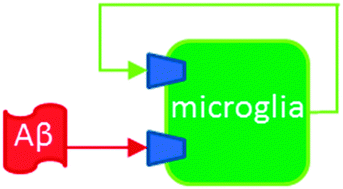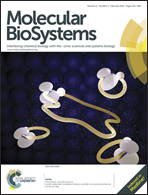Temporal-logic analysis of microglial phenotypic conversion with exposure to amyloid-β†
Abstract
Alzheimer Disease (AD) remains a leading killer with no adequate treatment. Ongoing research increasingly implicates the brain's immune system as a critical contributor to AD pathogenesis, but the complexity of the immune contribution poses a barrier to understanding. Here I use temporal logic to analyze a computational specification of the immune component of AD. Temporal logic is an extension of logic to propositions expressed in terms of time. It has traditionally been used to analyze computational specifications of complex engineered systems but applications to complex biological systems are now appearing. The inflammatory component of AD involves the responses of microglia to the peptide amyloid-β (Aβ), which is an inflammatory stimulus and a likely causative AD agent. Temporal-logic analysis of the model provides explanations for the puzzling findings that Aβ induces an anti-inflammatory and well as a pro-inflammatory response, and that Aβ is phagocytized by microglia in young but not in old animals. To potentially explain the first puzzle, the model suggests that interferon-γ acts as an “autocrine bridge” over which an Aβ-induced increase in pro-inflammatory cytokines leads to an increase in anti-inflammatory mediators also. To potentially explain the second puzzle, the model identifies a potential instability in signaling via insulin-like growth factor 1 that could explain the failure of old microglia to phagocytize Aβ. The model predicts that augmentation of insulin-like growth factor 1 signaling, and activation of protein kinase C in particular, could move old microglia from a neurotoxic back toward a more neuroprotective and phagocytic phenotype.


 Please wait while we load your content...
Please wait while we load your content...